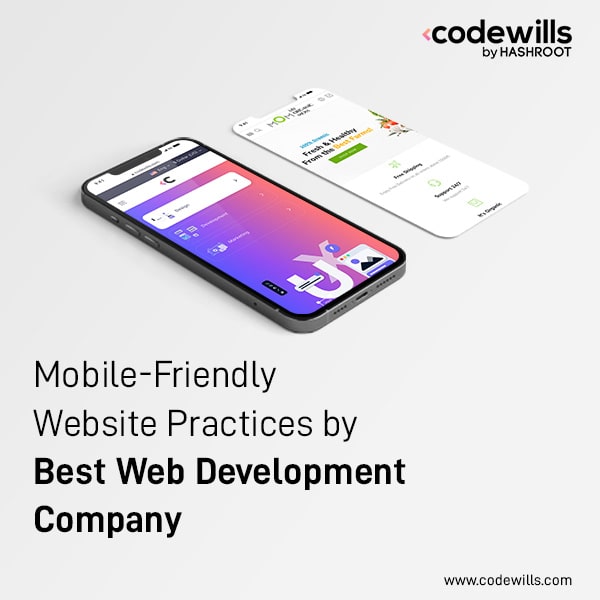
Is it necessary to have a mobile-friendly website? Yes, they are critical, in a nutshell. Mobile devices accounted for 48.7 per cent of global website traffic in the first quarter of 2019. That is not surprising given that internet usage statistics show that mobile devices accounted for 52.2 per cent of website traffic in 2018, surpassing desktop searches for the first time.
Mobile-Friendly websites: Then and Now
In 2013 mobile device traffic has more than tripled globally. As a result of this observation, Google began to reward mobile-friendly websites with higher search rankings while penalizing those which are not. Then, in 2018, Google announced its Mobile-First Indexing, which ranks websites based on their mobile versions rather than their desktop versions. The latest study discovered that companies that did not prioritize mobile-friendly versions experienced a traffic drop. According to statistics, mobile traffic accounts for more than half of all web traffic. Smartphone analytics forecast a 25% increase in mobile traffic by 2025. Mobile usability is skyrocketing, and all website owners must embrace mobile-friendly practices to improve Google rankings and conversions. So mobile-friendly optimization of the website has become an integral factor for Search engine optimization (SEO)
Mobile-Friendly Website Practices by the Best Web Development Company in India
Google recommends website owners implement website development practices that comply with the latest Google’s Page Experience Update that promotes mobile-friendliness. Let’s dive into the best mobile-friendly website practices adopted by website development companies in India.
1, Mobile-First Indexing Web Design
Google enables Mobile-First Indexing when your mobile version of the website follows similarities of the desktop version of the website. Similarities may consist of content, colours, and themes. Avoid using Flash because it may not be available on your visitor’s phone. Otherwise, those visitors will miss out on any special effects you created with the plugin.
Also, as Google and other experts advise, be aware of pop-ups. Pop-ups on mobile devices can be hard to close, resulting in a poor visitor experience and high bounce rates.
If you follow these tips and design your website with a responsive mobile structure in mind, your mobile features will transfer to desktops, making them look identical.
2, Conduct Extensive Research Strategies For Mobile before Desktop
If using ads for revenue is a secondary profit method, consider eliminating them on mobile to keep your website fast and clean. Non-optimized ads can cause delays and affect user experience.
Perform speed tests on various elements of your website. When any web elements take much longer to load, consider whether they are essential to your website’s content and whether you should reduce or eliminate them. Page load and speed are now important ranking factors, so don’t ignore them!
3, Mobile-Friendly Content Writing
The following best practice tip for mobile-friendly websites is all about content. Writing content for mobile users should be kept in mind with optimum readability. A common practice used to squish content or reduce font sizes to fit smaller mobile screens. The ultimate goal is that people can easily read and digest on any screen size. A few ideas to get started:
*Include big, descriptive buttons.
*Boost the font size. Choose a line height of 1.5 and a minimum of 16px.
4, Improve the Navigation and Home Page
Limit items put at the top of your website and keep other factors in mind to help visitors navigate your site easily on a mobile device. Try to place important page links at first for quick navigation. Consider including a search box rather than additional dropdown menus if your website is complex, such as a large E-commerce website with many product categories, items, sizes, colours, etc. Configure your search bar for various additional search terms and test it to ensure it works.
Additionally, keep the menu language straightforward on mobile devices with symbols or signs that resemble their purpose. Some examples include placing a magnifying glass next to your search bar to clarify the function of that feature. Sometimes the menu can be represented by a few stacked lines, a shopping cart that represents items visitor has decided to purchase.
Make it simple to return to the home page. Giving a home page link to the Logo can be used as best navigation practice. Streamline a user’s experience so that they can enjoy what you have to offer in the fewest number of navigational steps.
5, Image Optimization for Increased Speed
A higher loading time of the website happens if all images load slowly. Large image file sizes can delay the page loading speed. Always make sure the images are compressed or have an image file size less than 100 kb.
Adopting various low size image extensions on the website can benefit significantly. Image extension formats such as WebP, SVG, Compressed JPG, and Compressed PNG are the widely used practices.
Scaling the images using HTML markup according to screen size is another approach to optimize page speed. It stops the visitor’s browser from downloading larger images than necessary.
6, Increase Performance by Reducing HTTP Requests and Combining Files
When visitors arrive at your website, their browser sends a request to the server for the files required to load the site. The more files required, the longer it will take for the page to load. Reducing the number of file requests as much as possible would be the solution. Combining and compressing the essential files for the initial load and deferring non-essential files at the initial load increase performance. The combine-defer approach resulted in a noticeably faster website load time.
7, Optimize the Forms on Your Mobile Site
Typing on a mobile device for an extended period is frustrating, even for the most modern generation. The more we have to type in a form on a mobile device, the more annoying a website is and the faster chances of leaving it. So keep all your website forms short and Simple. Relevant information with 4 or 5 fields is the most practiced approach.
8, Typography
Chose simple, clear, and crisp fonts because no user should spend time or effort deciphering specific typography. Large blocks of text cause inconvenience to mobile users because they must constantly scroll to get to the point you’re trying to make. All texts should be readable and understandable for all age groups.
9, Test Your Website
Make sure the website is mobile-friendly by testing on various mobile platform devices such as smartphones, tablets, laptops, desktops etc. The most straightforward method is to use Google’s Mobile-Friendly Test. You can enter your URL after you’ve published your website, and Google will run a test with its “Googlebot smartphone.” Page loading issues, bugs, and design alignment issues tested and rectified can result in an optimized website.
Why Codewills for Mobile-friendly website development in India?
Codewills is the most reputed website development company that provides mobile-friendly custom website development services in India for businesses of all scales. Google ranks websites based on their mobile-friendliness, and people access the internet more frequently on mobile devices than on desktop computers. And, with so many different screen sizes, your website must be able to adjust to each of them. Codewills understands the importance of mobile-friendly websites and implements highly responsive web design with dynamic element features for businesses.
Businesses looking to thrive in this competitive world can approach Codewills to shape their mobile-friendly customized website. Join hands with Codewills to embark on the journey of success and capture the attention of mobile audiences around the world.
